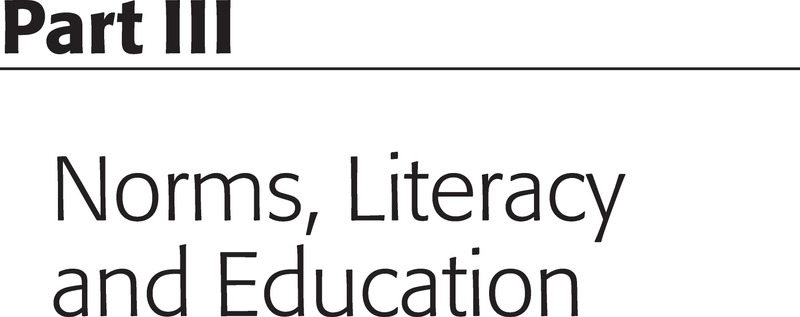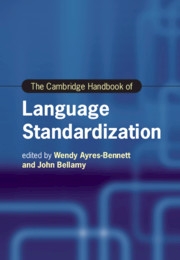Book contents
- The Cambridge Handbook of Language Standardization
- cambridge handbooks in language and linguistics
- The Cambridge Handbook of Language Standardization
- Copyright page
- Contents
- Figures
- Tables
- Contributors
- Introduction
- Part I Revisiting Models and Theories of Language Standardization
- Part II Legitimacy, Authority and the Written Form
- Part III Norms, Literacy and Education
- Part IV Beyond the National
- Part V Standardization in Late Modernity
- Name Index
- Subject Index
- References
Part III - Norms, Literacy and Education
Published online by Cambridge University Press: 01 July 2021
- The Cambridge Handbook of Language Standardization
- cambridge handbooks in language and linguistics
- The Cambridge Handbook of Language Standardization
- Copyright page
- Contents
- Figures
- Tables
- Contributors
- Introduction
- Part I Revisiting Models and Theories of Language Standardization
- Part II Legitimacy, Authority and the Written Form
- Part III Norms, Literacy and Education
- Part IV Beyond the National
- Part V Standardization in Late Modernity
- Name Index
- Subject Index
- References
Summary

- Type
- Chapter
- Information
- The Cambridge Handbook of Language Standardization , pp. 395 - 516Publisher: Cambridge University PressPrint publication year: 2021
References
References
References
References
Emojis used under a creative commons license, © Twitter. Full details:
Copyright 2020 Twitter, Inc. and other contributors.
Code licensed under the MIT License: http://opensource.org/licenses/MIT
Graphics licensed under CC-BY 4.0: https://creativecommons.org/licenses/by/4.0/



